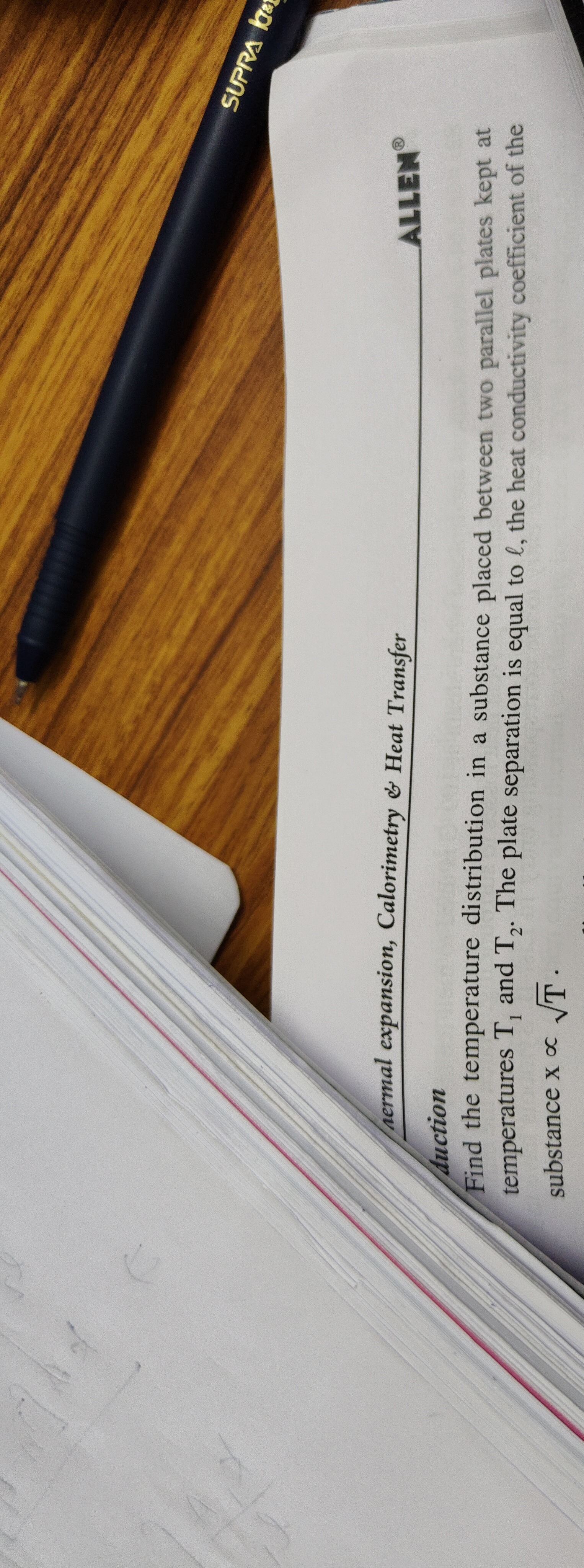Question
Question: Find the temperature distribution in a substance placed between two parallel plates kept at temperat...
Find the temperature distribution in a substance placed between two parallel plates kept at temperatures T1 and T2. The plate separation is equal to l, the heat conductivity coefficient of the substance x∝T.

Answer
The temperature distribution in the substance is given by: T(x)=[(1−lx)T13/2+(lx)T23/2]2/3
Explanation
Solution
The problem asks for the temperature distribution T(x) in a substance between two parallel plates at temperatures T1 and T2, separated by a distance l. The thermal conductivity k of the substance varies with temperature as k∝T, which can be written as k=CT where C is a constant.
- Fourier's Law of Heat Conduction: In one dimension and steady state, heat flux J is given by J=−kdxdT. Since heat flows from higher to lower temperature, J is constant throughout the substance.
- Incorporate Variable Conductivity: Substitute k=CT into Fourier's Law: J=−CTdxdT
- Separate Variables: Rearrange the equation to separate temperature and position variables: Jdx=−CTdT
- Integrate over the entire length: To find the constant heat flux J, integrate from one plate (x=0, T=T1) to the other (x=l, T=T2): ∫0lJdx=∫T1T2−CTdT Jl=−C[3/2T3/2]T1T2=−32C(T23/2−T13/2) J=3l2C(T13/2−T23/2)
- Integrate for Temperature Distribution: Now, integrate from the first plate (x=0, T=T1) to an arbitrary position x with temperature T(x): ∫0xJdx′=∫T1T(x)−CT′dT′ Jx=−C[3/2T′3/2]T1T(x)=−32C(T(x)3/2−T13/2) Jx=32C(T13/2−T(x)3/2)
- Solve for T(x): Substitute the expression for J from step 4 into the equation from step 5: 3l2C(T13/2−T23/2)x=32C(T13/2−T(x)3/2) Cancel 32C and rearrange: lx(T13/2−T23/2)=T13/2−T(x)3/2 T(x)3/2=T13/2−lx(T13/2−T23/2) T(x)3/2=(1−lx)T13/2+lxT23/2 Raise both sides to the power of 2/3 to get T(x): T(x)=[(1−lx)T13/2+lxT23/2]2/3
